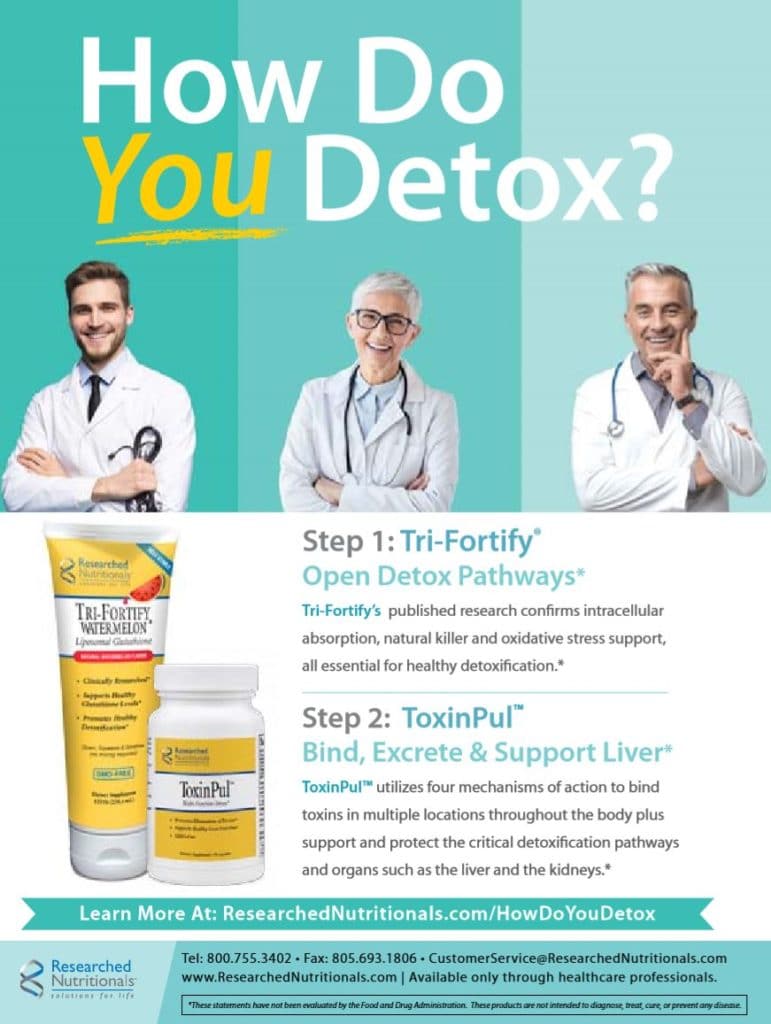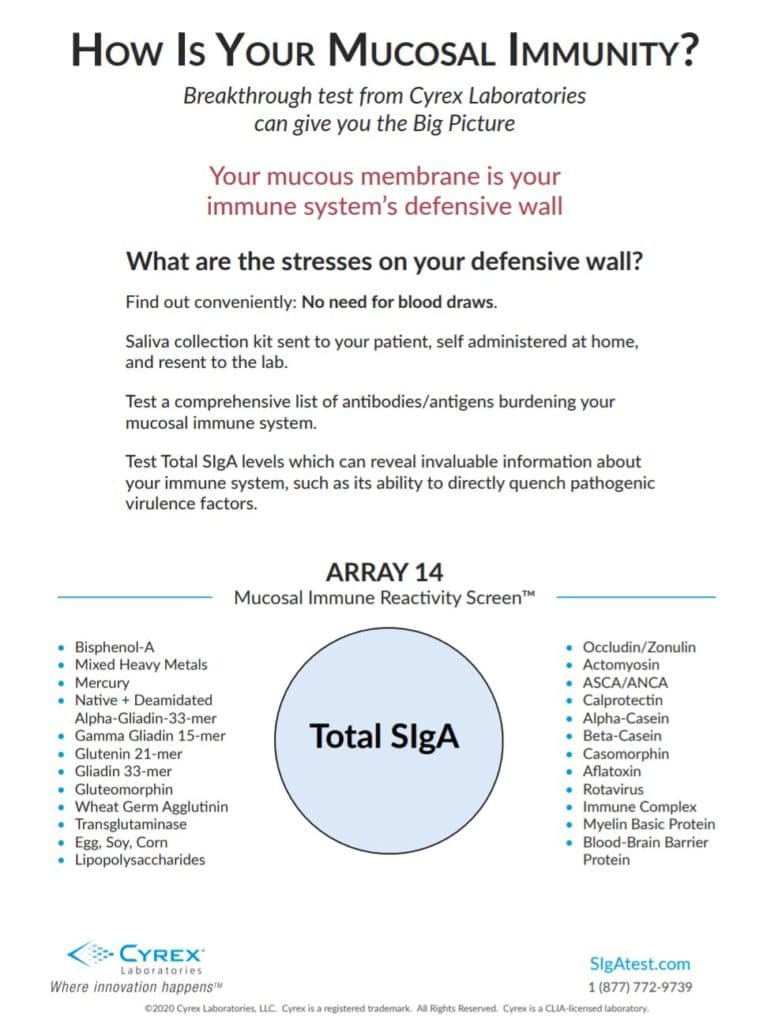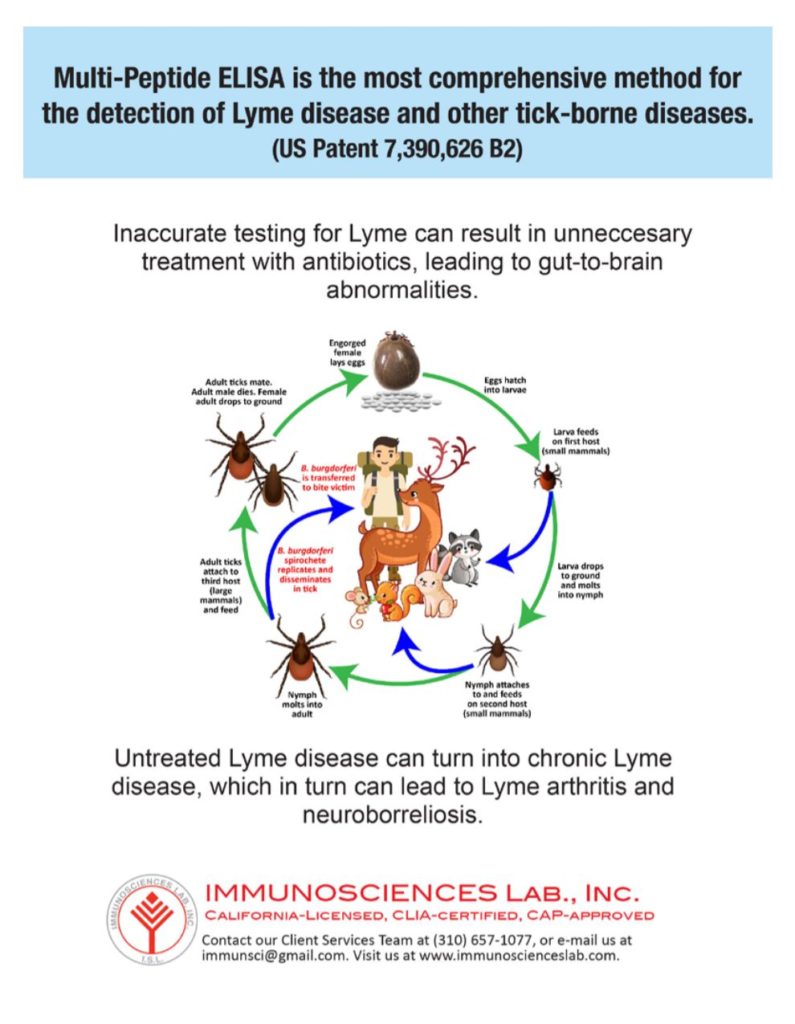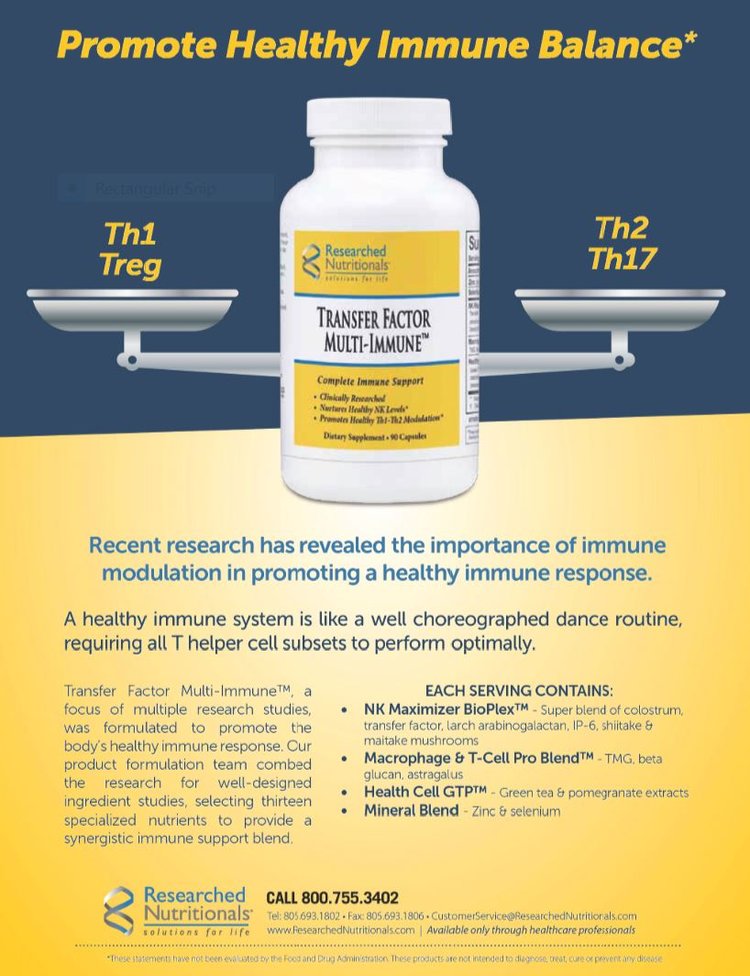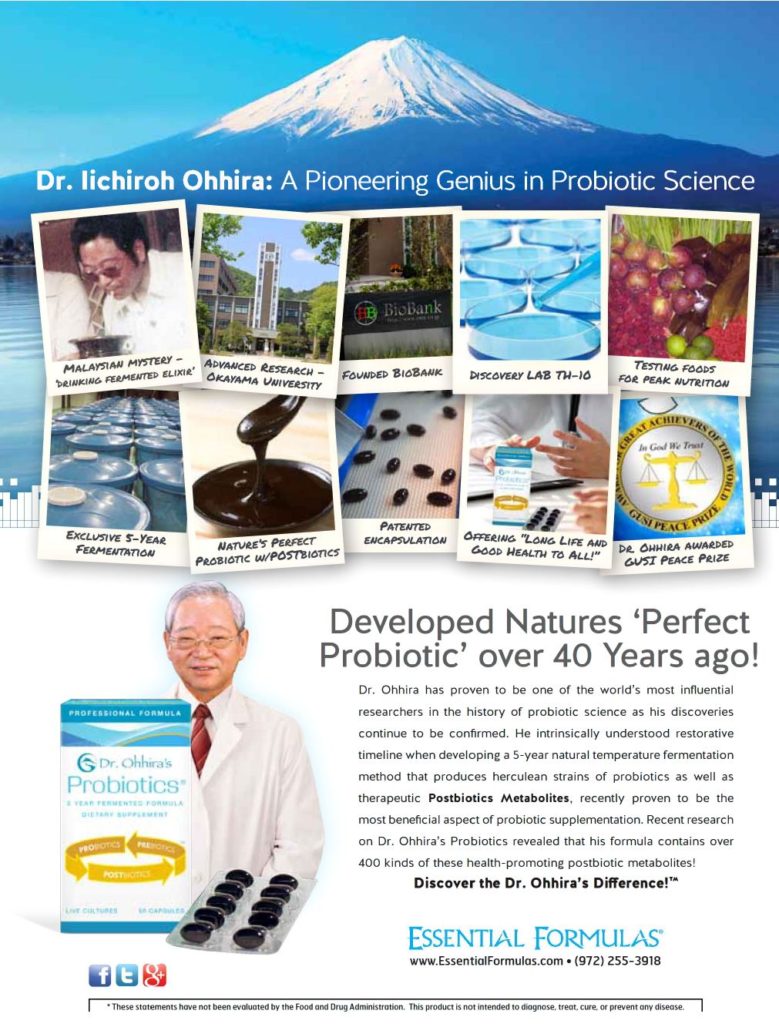By Thomas A. Kruzel, ND
The issues regarding vaccinations in the modern era are many and varied but still have their roots embedded in the philosophical differences spawned by the germ and terrain theories from over a century ago. While conventional medicine has always recognized the body’s ability to develop, maintain, and utilize its immune system in order to combat disease, it has differed as to how this should be accomplished. Naturopathic physicians have always held that naturally occurring immunity through exposures during childhood is ultimately the best and most complete way to achieve immune competency while allopathic medicine has emphasized vaccination against the various diseases as being superior.1
Homeopathic physicians too recognized the inherent problems with conventional vaccinations and the superiority of homeoprophylaxis and the genus epidemics (the homeopathic medicine identified to treat the communicable disease) for prevention and treatment. The goal of both approaches is to enhance immunity while imparting vigor to the system in order to maintain homeostatic balance when someone encounters a disease entity.
Naturopathic medicine has long held that immunity is best developed through exposure during childhood when the child’s immune system is undergoing development and because of naturopathy’s ability to treat infectious diseases without the use of antibiotics and antipyretics. Because of this many naturopathic physicians have traditionally opposed conventional vaccinations that introduce foreign substances through the skin completely bypassing the evolutionary oral/nasal route.2 While this approach to enhance immunity through natural means has a sound basis in immune system function and development, it is also subject to variables such as diet and nutrition, poverty, genetic makeup, and psychosocial as well as environmental factors that were not present a century ago. Therefore, many naturopathic physicians have also sought to enhance immunity through alternative therapies such as homeoprophylaxis and vaccination.
Controversy about whether homeopathic medicines actually have an effect on the body has been present since its introduction by Hahnemann in 1796. The controversy lies in the fact that, at a 30c potency, the dilution exceeds Avogadro’s number (1023) so that theoretically there should be no measurable remnants of the starting materials.3 Therefore it has been difficult for those whose scientific training is largely based on measurable substances and their actions on biological systems to accept that a solution that contains essentially no molecules other than the solvent could produce any effect at all. This has been particularly difficult for physicians who are now being trained in “evidence” based medicine that requires clinical studies in order to validate a therapy, often dismissing clinical outcomes as being coincidental or placebo.
Until recently, our ability to measure and evaluate how homeopathic preparations work has been hampered by a lack of technology. Because of some advances in scientific technology however, researchers are better able to measure and evaluate their effects upon biological systems.
A number of more recent studies on homeopathic preparations have begun to shed some light on how these medicines work and their effects upon the host. Utilizing techniques such as scanning electron microscopy (SEM), transmission electron microscope (TEM), as well as nano-diffraction (SAD), energy-dispersive X-ray analysis (EDX) and Proton Nuclear Magnetic Resonance (NMR), researchers have begun to provide scientific evidence that homeopathic medicines, following succussion, exhibit nanoparticles which are crystalline nature and rich in silicon and are able to take on the properties of the substrate. Many of these studies also provide evidence as to how homeopathic dilutions affect living systems.3-5
Hahnemann’s genius was in the fact that he discovered that the process of dilution and succussion of the substance in alcohol and water in glass vials, imparted the activating properties to the medicine, whereas if this was not done, the substance was not as effective.
Changes in the ultrastructure of water, nanobubbles and ions as seen with proton NMR relaxation times, demonstrated solvent modifications at low- to ultra-molecular ranges up to 12c dilutions that persisted after destructuring of the initial solvent.5,6 Additionally when a specific substance is dissolved or immersed in alcohol and water and subjected to the potentization process, the water’s structural organization is changed in a manner dependent on the physical properties of the specific substance being potentized.7
More specifically the potentization process has been found to form nanoparticles that were discovered to be crystalline conglomerates of silicon particles that impart information to individual cells through interacting with proteins, DNA, RNA and other cellular components to effectively correct cellular imbalances due to a stressor/disease process. This occurs because the information of the source particle becomes encrypted through growth of a crystal layer or epitaxy with each successive succussion, producing nanoparticles that migrate to the surface to form as a monolayer. The information contained is then transferred to the next dilution/succussion process where the same sequence occurs.3,8,9
The resulting homeopathic preparation carries explicit “signals” that can be identified by specific cellular receptors that then act to turn on or turn off relevant genes. This then initiates a cascade of actions that alter and correct the gene expressions that have gone wrong resulting in the disorder or disease condition experienced by the patient.8,10
Because of their highly reactive catalytic surfaces, nanoparticles absorb other nanoparticles from metals, proteins, organic materials, biological entities, neutraceutical or plant extracts on to their surfaces.10 They are then able to convey specific biological effects to the organism to strengthen cellular resilience by affecting the allostatic stress response network. The resulting adaptive changes act to make the organism better resist maladaptive disruptions to the system while improving its ability to rebound from them.
Additionally, this process appears to also differentiate between the various substances undergoing potentization based upon Raman and Ultra-Violet-Visible spectroscopy findings.11 Thus, a high level of specificity can occur which supports the homeopathic concept of similia similibus curentur, or like cures like.
A study conducted by Montagnier et.al12 demonstrated that homeopathically prepared substances emit detectable electronic signals that are thought to convey remedy specific information to the cell. This occurs through the electrical conductivity of silica and other nanoparticles contained in the substances being potentized.
The allostatic stress response network is seen as the interface between the environment and the organism that protects the organism from the accumulation of physiological, psychological and environmental stressors.11 In the context of physiology, a stressor is any type of environmental or exogenous stimulus or signal that perturbs the system’s homeostasis and sets compensatory adaptive changes into motion that over time, cause the body’s homeostatic mechanism to become skewed so that we begin to experience the signs and symptoms of disease. The range of stressors can include environmental, biological, infectious, chemical, physical, psychological, nutritional, electromagnetic, and/or psychosocial types, changes that constitute a perceived threat to the survival of the organism.10 In the early stages these are often not accompanied by measurable parameters, but none-the-less, are experienced as a disturbance by the individual.
Because homeopathic medicines act as low-level triggers for systemic stress responses, they work differently than pharmaceutical agents that alter biochemistry in order to maintain or alter homeostasis. Homeopathic medicines are thought to mobilize a hormetic response in the organism following exposure to generated nanoparticles created during the potentization process. This distinguishes them from drugs due to their unique structure and function. Clinical outcomes become a function of the organism’s ability to adapt to the novel stressor rather than a reaction or modification to a cruder substance i.e. drug.10
In addition to studies on humans, one of the requirements for scientific validation involves whether the experiment can be reproduced under laboratory conditions in order to eliminate any placebo effect.
Experiments utilizing cell cultures and measuring heat shock proteins (hsps) demonstrate that during periods of enhanced sensitivity, cells react to stressors applied in low dose to which they would otherwise not react. In a series of experiments on cell cultures, hsps were produced by healthy cells in response to low dose stressors. The researchers then applied homeopathic preparations of the individual stressors and measured for the presence of hsps. What they found was that the cells produced hsps in response to the individual preparations allowing for greater resistance to the stressor. After repeated dosing, the cells’ ability to resist low dose stressors increased, making them more resilient to the perturbation.
The result was cumulative, and affected cells were better able to make adaptive changes in order to restore homeostasis. Additionally, the researchers found that with repeated dosing of the stressor substance, cell response continued to increase, which remained long after the cells were exposed to the homeopathic preparation. In essence, cells in culture became more resistant to external stressors allowing them to resist the stressor/disease.14
Researchers also have looked at whether homeopathic preparations affect cellular DNA/RNA. In an experiment designed to see if homeopathic medicines affected gene expression, Saha and Das et al15 pretreated Escherichia coli (E. coli) bacteria with Arnica, Belladonna, and Rhus tox at the 30c potency to see if there was an increase in activity of E. coli DNA activity in response to bacteriophage exposure. The researchers also looked at whether the homeopathic medicine affected the bacteriophage by pretreating it prior to infecting the E. coli. Pretreatment did not affect the bacteriophages’ effect upon the bacteria whereas pretreatment of the E. coli increased their ability to resist the bacteriophage. They concluded that the homeopathic medicines’ effects were to modify gene expression of the E. coli in order to produce the necessary proteins to resist infection by the bacteriophage.
The authors observed that “…clustered regularly interspaced short palindromic repeats (CRISPR) form peculiar genetic loci, which provide acquired immunity against viruses and plasmids by targeting nucleic acid in a sequence-specific manner. These hyper variable loci take up genetic material from invasive elements and build up inheritable DNA-encoded immunity over time.”15 The authors went on to speculate that the homeopathic medicines used in the experiment could have enhanced the activity of the gene-clustered elements to destroy the bacteriophages as they entered the cell. They cited a number of previous studies that also presented strong evidence of homeopathic medicines affecting specific gene activity.
Another study16 looked at the effect of ultraviolet radiation on E. coli and the organism’s molecular repair pathways. Escherichia coli utilizes specialized repair proteins that continually scan the internal environment and trigger repair when damaged DNA is found. Arnica 30c significantly reduced intracellular oxidative stress by increasing superoxide dismutase (SOD), catalase (CAT) and glutathione (GSH). Analysis of DNA damage showed considerably less damage in cells treated with Arnica 30c compared to placebo. The researchers also found “clear evidence” of over expression of the protective genes resulting in “enhanced up-regulation” of the repair genes under the action of the Arnica.

In a series of articles, Iris Bell, MD, PhD, and her research team at the University of Arizona have characterized the organism’s cellular response to homeopathic preparations as a complex adaptive system that initiates plastic and metaplastic adaptations that occur over time to reestablish homeostasis and impart cellular memory to recognize and respond to further perturbations by the same or similar agents. This occurs because the allostatic stress response network is able to recognize low dose stressors provided by the homeopathic preparations in order to initiate adaptive changes by activating the body’s complex adaptive system to restore normal function. Further, the more often the organism is presented with the homeopathic preparation, the more resilience that occurs, again similar to the cell culture experiments that demonstrate that repeated exposure imparts lasting vigor to the system. Additionally, when the homeopathic preparation is administered to a healthy individual, the metaplastic effects are found to enhance the disease related defense mechanisms of the organism.11,13,17 This occurs because the actions affect physiological function to alter physical, optical, biochemical, biological, electrical, magnetic and quantum properties of the system unlike drugs, which can only affect the system pharmacologically by altering biochemical pathways.
This process is based upon the principle of similarity as the organism perceives the remedy as a stronger disease state than the current affliction and is able to make adjustments at the cellular level to restore the normal homeostatic state.18
Homeopathic Medicine’s Effects Upon Immunity
Currently 219 viral organisms have been found that can potentially infect humans resulting in a variety of diseases. Many of these are considered benign illnesses acquired during childhood when the immune system is developing, causing little harm unless the child is malnourished or immune-compromised.19 Not all persons exposed to a viral invader will react the same way as a variety of factors such as genetic predisposition, environment, diet and nutrition, immune response, and the ability to mount a fever must be taken into account. In naturopathic philosophy, it is the soil, not the organism that gives rise to infectious disease.
Because of the limited complexity of viral capsules, they are often composed of similar capsomeres made up of a limited number of proteins. These capsids may be of icosahedral or helical symmetry and are termed nucleocapsids when combined with nucleic acids. Many of the viruses that infect humans possess a simple nucleocapsid structure that mediates contact with uninfected cells while other more complex viruses modify themselves once they come in contact with the cell surface.20
The immune system can be divided into two functional components, the innate immune and adaptive immune systems that are activated in response to a viral exposure. The innate immunity response results from recognition of viral or bacterial components such as nucleic acids, by a limited set of cellular recognition receptors, and secondly through the activation of intracellular signaling mechanisms once the virus has entered the cell or bacteria adheres to the cell wall. This occurs through pathogen-associated molecular-patterns (PAMPs) via pattern recognition receptors.21 Their action leads to induction of type I interferon production resulting in an acute inflammatory response, as well as presenting antigens for activation of the adaptive immune response. Repeated exposure to the virus or bacteria will evoke a similar response due to genes encoding for the receptors and signaling mechanisms. Repeated exposure to the viral signature results in an enhancement of this mechanism.
Also part of an initial innate response involves the proteins of the complement system and other acute phase proteins such as collagen containing C-type proteins or lectins, whose function it is to bind to oligosaccharide or lipid structures on the bacterial or viral capsid. These act to eliminate viral and bacterial organisms through opsonization, phagocyte activation, complement activation or inhibition of cell growth. Found in the blood and interstitial fluid, they are rapidly produced by the liver in response to foreign invaders.
The adaptive immune response will take days to evolve because both the T and B-lymphocytes must identify the virus. B-lymphocytes form cellular memory for the specific virus while T-lymphocytes recognize viral infected cells through recognition of processed peptide proteins found on the surface of infected cells. With both T and B-lymphocytes, the more often an exposure to the virus or viral signature, the more rapid the response time due to developing immunological memory.20, 22, 23
Nature has provided sufficient amounts of lymphoid tissue throughout the oral, nasal, and respiratory tracts in order to accommodate antibody formation to specific viral invaders. These are primarily made up of B-lymphocytes and the mechanism is enhanced by an initial activation of the innate response in order to allow sufficient time for B-lymphocyte recognition and formation of antibodies. This process is largely bypassed by injecting vaccines through the skin where attenuation and recognition of the virus resulting in the formation of antibodies in response to the vaccine is less effective. This also occurs to some extent because, peripherally, there is a preponderance of T-lymphocytes compared to B-lymphocytes.24, 25
Conventional vaccinations work primarily on the adaptive immune system, the immune response being measured by the formation of antibodies, whereas homeopathic nosode preparations affect the innate as well as the adaptive immune system. This is probably the reason that antibody titers are generally not found following nosode administration because the immunity developed by the cell occurs primarily through the innate mechanism. However, it has been my observation/experience that a subset of patients will in fact develop antibodies following the administration of nosodes. This probably occurs due to subsequent exposure to the virus; but because of the protection and enhancement of the innate cellular defense mechanisms imparted by the nosode, the patient does not develop the disease, only antibodies. This seems to parallel the work conducted by Chavon, Boyd and Patterson when they demonstrated immunity to diphtheria following nosode administration as they too utilized high potencies.
Historic Use of Homeoprophylaxis and Vaccination
The use of homeopathic nosodes and using the simillimum during outbreaks of epidemics has been a part of homeopathic medicine since its inception by Hahnemann in the late 1700s. In fact it was the success of homeopathic medicines during an epidemic of scarlatina in Germany in 1801 that brought rapid recognition to an emerging medical therapy. Hahnemann published a pamphlet Cure and Prevention of Scarlet Fever in 1801. At the time he promoted Belladonna as a specific prophylactic remedy for scarlatina. This was later changed to include Aconite as other homeopaths found it worked as well.26
Homeopathic vaccination involves the use of the routine administration of a series of specific viral nosodes in order to confer long-term resistance. Homeoprophylaxis involves the use of individual remedies, selected in an individualized and non-routine manner, to reduce or eliminate the morbidity of epidemic and sporadic contagious acute diseases in the short term. Homoeopathic vaccination is a relatively modern-day innovation, largely developed as an alternative to allopathic vaccination, whereas homoeoprophylaxis is well rooted in classical homeopathic practice.
According to Hahnemann another aspect of the Law of Similars is as follows: A substance that is capable of producing symptoms in a healthy person similar to the characteristic symptoms of an infectious disease is capable of preventing these same characteristic symptoms in a previously unprotected person. An example would be the use of homeopathic China or Natrum muriaticum as a preventive for malaria. Conversely, a substance that is capable of removing the characteristic symptoms of an infectious disease in an infected person is capable of preventing the same characteristic symptoms of the disease in a previously unprotected person. For example: Belladonna for scarlet fever and Pulsatilla for measles.
In 1897 British homeopath J. Compton Burnett wrote a booklet entitled Vaccinosis and its Cure by Thuja. In it he raised the idea that vaccination can induce a disease state onto the vital force, which he called vaccinosis. Vaccination protocols, following the work of Pasteur, in the early days were responsible for considerable morbidity and mortality due to the crude preparations being used at that time. While the preparations have changed in the “modern era,” the vaccines, due largely to the added adjuvants, also have been implicated in increased morbidity and mortality. Burnett’s ideas later helped form the basis of the homeopathic view of vaccination.27 Success using Thuja as well as Silicea and Ledum to counter the negative effects of conventional vaccination is a therapy that is still effective today.
Boyd and Patterson conducted studies using homeopathic preparations of Diphtherinum during World War II in England to see if there could be conversion of the Schick test. This followed a publication by Chavano in 1932 where he demonstrated antibody formation to diphtheria following treatment with homeopathic Diphtherinum. Chavano converted 45 children from Schick test positive to Schick test negative which demonstrated antibody formation to diphtheria.28 The Schick test was the standard test that evaluated whether someone had immunity to diphtheria, then a dreaded childhood illness with a high mortality rate. Boyd and Patterson’s study resulted in 20 of 33 children converting to Schick test negative. These results were duplicated by Roux in 1946. The potencies used by Patterson and Boyd were 30c and 201 made from diphtheria membrane.29
Clinical research by Isaac Golden, PhD, utilizing homeopathic vaccination shows a much better response to homeopathic nosode preparations when compared to conventional immunization. In his work Golden compared the pertussis attack rate between unimmunized children and those given the whooping cough prophylactic during his 15-year study. From this he was able to determine efficacy. The unimmunized had an attack rate of 85% while the homeopathically protected group had an attack rate of 11.7%, producing a figure of efficacy of 86.2%. Overall, there was a 90.4% effectiveness of homeopathic vaccinations in those who do not suffer from the disease following exposure.30,31
In a similar study conducted by Dr. A.D. Fox,32 prophylaxis with a nosode prepared from a disease component of whooping cough was administered to children. Of the received 61 parent responses, 5% of children definitely contracted whooping cough and 82% remained whooping cough free while the other 13% developed undiagnosed coughs over a five-year period. The prophylaxis was well tolerated with 67% of parents rating its effectiveness as “very good.”
While few studies for the effectiveness and safety of homeopathic homeoprophylaxis and vaccination preparations have been conducted, A. H. Grimmer reported that of the over 30,000 individuals that received Lathryus sativa to prevent polio, no one reported a side effect.33 Grimmer also documented the effectiveness of various homeopathic remedies and nosodes for treatment and prevention of other infectious diseases. Golden reports that the use of homeoprophylaxis for multiple diseases resulted in about a 10% side effect rate with many of these being mild and brief.34
Both Grimmer’s and Golden’s results parallel our own when it comes to the effectiveness of homeopathic immunization and prophylaxis. Additionally, we have seen very few if any reactions to nosode administration. In those cases where there were, similar to Golden’s experiences, they too were brief and limited. When such reactions have occurred, I have considered them to be a clearing of a probable miasm and have noted that with the next round of nosode administration, there was no recurrence.
Additionally, it has been my observation that children immunized homeopathically, with doses repeated yearly from age 1 until age 12, generally have fewer childhood illnesses, are better able to handle the childhood exposures to infectious diseases with little or no morbidity, and have a quicker immune response when an exposure occurs.
Genus Epidemicus and the Use of Homeopathic Medicines in Epidemics
During the influenza pandemic of 1918, from which 20% of the world population died and the lifespan in the US decreased by 10 years, homeopathic medicines were used to not only treat the disease but also used as prophylaxis. The average mortality rate under standard allopathic care was 2.5 to 10% while there was a 1% mortality rate under homeopathic care.
In an article titled “Homeopathy in Influenza – A Chorus of Fifty in Harmony” published in the Journal of the American Institute of Homeopathy in 1921, W. A. Dewey, MD, reviewed influenza cases treated by homeopathic physicians during the pandemic compared to conventional medicine.
Of 26,795 patients treated by homeopathic physicians in Philadelphia, the mortality rate was 1.05% compared to the conventional rate of 30%. Dr. Wieland who treated influenza in 8000 factory workers in Chicago reported only one death, while Dr. Williams from Rhode Island reported no losses from influenza and only a 2.1% loss in those who developed pneumonia. This was in contrast to conventional medicines 60% death rate following the use of aspirin. Numerous other examples were given which clearly established the superiority of homeopathic medicines for the treatment of infectious diseases such as influenza.
A later clinical trial utilizing homeopathic medicines for influenza showed that the use of homeopathic medicines prevented flu and acute respiratory infection symptomatic episodes in children, suggesting a homeopathic prophylactic potential. The authors concluded that the use of homeopathic medicines to prevent different diseases should be encouraged in the Public Health System, considering that homeopathy is a safe, low-cost and effective therapy.35
In Cuba where Leptospirosis becomes a problem during the monsoon season, the Cuban government in 2007 distributed a homeopathic nosode comprised of four strains of Leptospirosis to 2.3 million people considered at high risk for contracting the disease, while 8.8 million went unvaccinated. In the provinces where treatment with the nosode was initiated, an 84% decrease was noted while the numbers of infections in the untreated provinces remained at expected infection rates. What was of interest however was that in 2008 the previously treated provinces again showed an 84% reduction in leptospirosis cases despite no vaccinations being administered that year while the number of cases increased by 22% in the unvaccinated regions.36 This suggests that the initial homeoprophylaxis retained its effectiveness.
In 1974 during a meningococcal epidemic in Brazil, 18,640 children were immunized homeopathically against the disease while 6,340 were not. Of the homeopathic cases only four cases of meningococcal disease were recorded as opposed to 32 cases among the unimmunized children.37
Based upon these results, Mroniski and his associates initiated a second study also utilizing homeopathic immunization against meningococcus that showed a 95% protection rate during the first six months and 91% over the next year.38
A study conducted in India on chikungunya fever showed there to be a “highly significant effect” utilizing the genus epidemicus for this rare form of viral fever transmitted by the Aedes aegypti mosquito. The authors demonstrated that 73% of those who were unprotected contracted the disease, while only 17% of the homeoprophylactic group did.39 While the fever is not generally considered to be fatal, a number of deaths were reported in 2005-2006.
Homeopathic medicines utilized in Brazil for dengue fever in May 2001 showed that a single dose of Eupatorium perfoliatum 30CH demonstrated an 85% effectiveness rate when compared to areas where it was not used.40 This protocol was repeated with similar results in a number of studies conducted in countries such as Cuba, India, and Thailand from 2006 to 2014.41
Based upon an increasing number of scientific studies, epidemiological data and clinical outcomes observations, there seems enough evidence to more deeply study the effectiveness of the use of homeopathic medicines as nosodes, genius epidemicus and homeoprophylaxis for the treatment, and most importantly, the prevention of infectious diseases. Certainly, their track record as preventatives during epidemics, as well as their long-term protective effect, warrants their serious consideration.
Our own clinical experience utilizing homeopathic nosodes to immunize children is that they are extremely safe and highly effective, as very few children in over 30 years of administering them, have come down with the disease immunized against. In those rare cases, the child afflicted experienced a shorter course and responded well to additional homeopathic prescriptions. Additionally, we see very few influenza cases among our established patients as we promote the influenza nosode to be taken weekly during the cold and flu season. Many of the cases we do see are in patients that have obtained a flu shot.
Scientific studies now reinforce what has been observed since homeopathic medicines were introduced in the 1700s—that not only do they work, but are safe and effective and affect the human organism in a way that conventional vaccines and drugs are unable to do. Considering the current debate and controversies with regard to conventional vaccinations, homeoprophylaxis and immunization protocols should be considered as a safe, viable, and effective alternative.
Complete References found on Page Two

